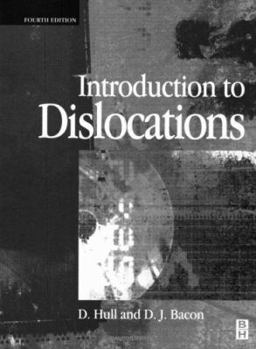Introduction to Dislocations
Select Format
Select Condition 
Book Overview
Introduction to Dislocations was first published in 1965 in a series aimed at undergraduate and postgraduate students in metallurgy and materials science and related disciplines. At the time, the subject was maturing and it was expected that 'dislocation concepts' would remain a core discipline for a very long time. As expected, the book has been, and remains, an important undergraduate text all over the world.A wider range of materials has emerged since 1965, most notably in the field of electronics and micro-engineering. The principles of dislocation theory still apply but some of the detail requires further treatment.This fourth edition provides an essential basis for an understanding of many of the physical and mechanical properties of crystalline solids. This new edition has been extensively revised and updated to reflect developments in the understanding of the subject, whilst retaining the clarity and comprehensibility of the previous editions.
Format:Paperback
Language:English
ISBN:0750646810
ISBN13:9780750646819
Release Date:August 2001
Publisher:Butterworth-Heinemann
Length:256 Pages
Weight:1.10 lbs.
Dimensions:9.5" x 0.5" x 7.3"
Customer Reviews
2 ratings
Clear, concise, and well-written
Published by Thriftbooks.com User , 17 years ago
This is an excellent introductory text on dislocation theory. The author does a good job of outlining fundamental materials principles before jumping into defects. The diagrams and images used are top-notch -- if only one could capture such good examples in practice! The latter half of the text covers some information on other types of defects (tilt boundaries, stacking faults) as well as numerous characterization techniques. Recommended!
Very good elementary representations of dislocation theory.
Published by Thriftbooks.com User , 26 years ago
Much better and easier to understand than the many other classical dislocation theory books. It is also very comprehensive, although a little outdated due to its publication date.






